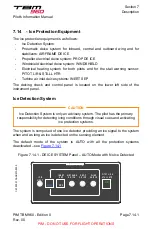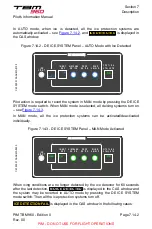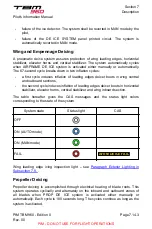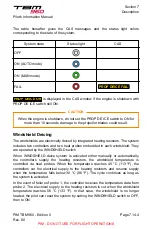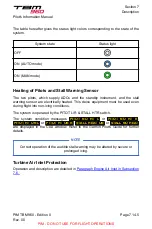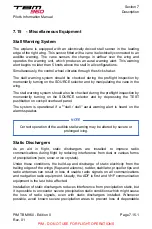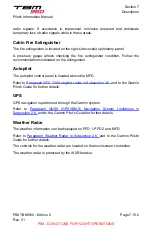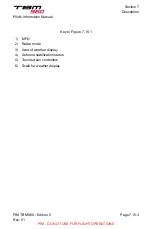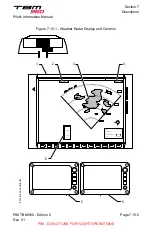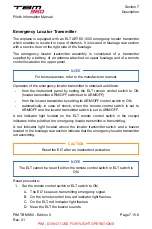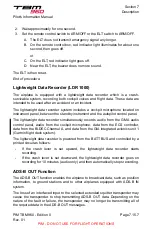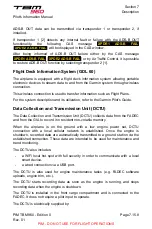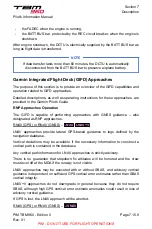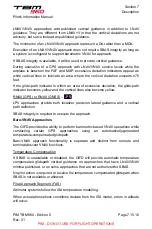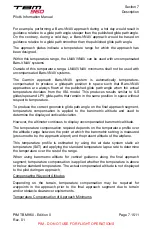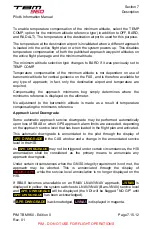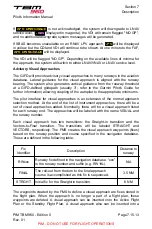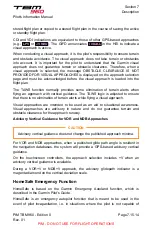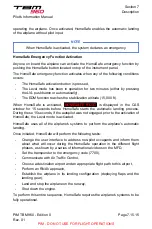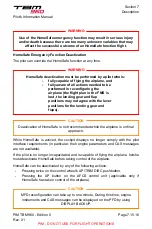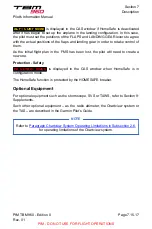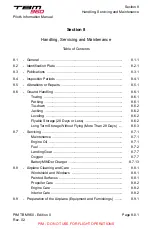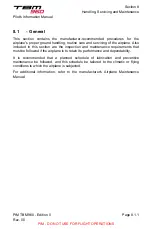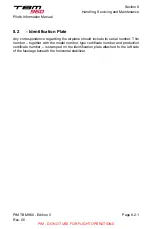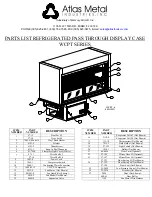
-
the FADEC when the engine is running,
-
the BATT BUS bar, protected by the REC circuit breaker, when the engine is
shutdown.
After engine shutdown, the DCTU is electrically supplied by the BATT BUS bar as
long as flight data is transferred.
NOTE
If data transfer lasts more than 60 minutes, the DCTU is automatically
disconnected from the BATT BUS bar to preserve airplane battery.
Garmin Integrated Flight Deck (GIFD) Approaches
The purpose of this section is to provide an overview of the GIFD capabilities and
operation related to GIFD approaches.
Detailed descriptions, as well as operating instructions for these approaches, are
provided in the Garmin Pilot’s Guide.
RNP Approaches Operation
The GIFD is capable of performing approaches with GNSS guidance – also
designated as RNP approaches.
RNAV (GPS) or RNAV (GNSS) –
LNAV
,
LNAV+V
LNAV approaches provide lateral GPS-based guidance to legs defined by the
navigation database.
Vertical deviations may be available if the necessary information to construct a
vertical path is contained in the database.
Any vertical path information for LNAV approaches is strictly advisory.
There is no guarantee that stepdown fix altitudes will be honored and the crew
must level off at the MDA if the runway is not visible.
LNAV approaches may be executed with or without SBAS, and advisory vertical
guidance is dependent on sufficient GPS vertical error estimates rather than SBAS
vertical integrity.
LNAV+V approaches do not downgrade in general because they do not require
SBAS, although high GPS vertical error estimate anomalies could result in loss of
advisory vertical guidance.
If GPS is lost, the LNAV approach will be aborted.
RNAV (GPS) or RNAV (GNSS) –
L/VNAV
Section 7
Description
Pilot's Information Manual
PIM TBM 960 - Edition 0
Rev. 01
Page 7.15.9
PIM - DO NOT USE FOR FLIGHT OPERATIONS

